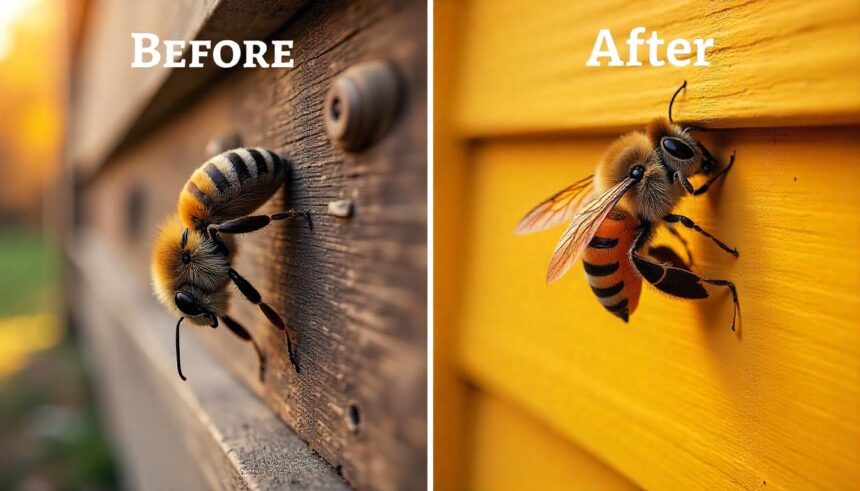Carpenter bees may seem harmless, but these buzzing intruders can cause significant damage to wooden structures. Unlike termites, carpenter bees don’t eat wood—they burrow into it to create nests, leading to weakened beams, decks, and fences over time. If you’ve noticed large, black bees hovering around wooden surfaces, it’s time to take action. This expert-backed guide will walk you through the best DIY solutions to remove and prevent carpenter bees effectively while considering eco-friendly alternatives.
Signs of a Carpenter Bee Infestation
Before taking action, confirm you have a carpenter bee problem. Look for these telltale signs:
- Round, smooth holes in wood: About ½ inch in diameter, these holes are entry points to their tunnels.
- Sawdust-like debris: Also known as frass, this powdery material near holes indicates active tunneling.
- Buzzing and hovering bees: Carpenter bees tend to linger near their nests, especially in spring.
- Woodpecker activity: If you see woodpeckers pecking at your home, they may be after carpenter bee larvae inside the tunnels.
The Damage Carpenter Bees Cause
Although they don’t eat wood, carpenter bees can create extensive internal damage over time. Tunnels can stretch deep into beams, compromising structural integrity. Repeated nesting seasons make the problem worse, as new generations expand old tunnels. If left unchecked, this can lead to costly repairs and weakened wooden structures.
Step-by-Step DIY Methods to Get Rid of Carpenter Bees
Here are the most effective ways to remove these pests without calling an exterminator:
1. Seal Existing Holes
- Wait until nightfall when bees are less active.
- Use steel wool or aluminum foil to fill the holes—these materials deter them.
- Apply wood filler or caulk over the plugged holes.
- Paint or seal the area to discourage future infestations.
2. Use Natural Repellents
Carpenter bees dislike certain smells. Try these eco-friendly deterrents:
- Citrus Spray: Boil citrus peels in water and spray affected areas.
- Almond Oil: Apply almond or tea tree oil around known nesting spots.
- Garlic and Vinegar Mix: Mix equal parts of white vinegar and garlic powder; spray in and around holes.
3. Install a Bee Trap
You can buy or DIY a carpenter bee trap using a wooden box with small holes leading to a clear plastic container. The bees enter but struggle to escape, eventually dying inside.
4. Apply Residual Insecticide (If Necessary)
If natural methods fail, consider a residual insecticide labeled for carpenter bees. Spray directly into active holes, then seal them after a few days.
5. Play Defense with a Decoy Nest
Carpenter bees avoid competition. Hanging a fake wasp nest nearby can deter them from settling in your wooden structures.
Preventing Future Infestations
Once you’ve dealt with the bees, prevent them from returning:
- Paint or seal all exposed wood: Carpenter bees prefer untreated, weathered wood.
- Use hardwoods: Softer woods like pine are more attractive to bees. Consider replacing vulnerable areas with hardwoods.
- Install metal or vinyl siding: If feasible, covering wooden surfaces with metal or vinyl can eliminate nesting opportunities.
- Maintain a clean, clutter-free yard: Remove rotting wood and piles of debris that could attract carpenter bees.
When to Call a Professional
If you have a severe infestation with extensive structural damage, or if DIY methods don’t work, call a pest control expert. They have specialized tools and treatments to handle large-scale problems safely.
Final Thoughts
Carpenter bees can be a nuisance, but with the right approach, you can reclaim your home and yard. Whether using natural remedies or targeted treatments, a proactive approach ensures these unwelcome guests don’t return. By sealing holes, applying deterrents, and protecting wooden structures, you’ll keep carpenter bees at bay for good.







